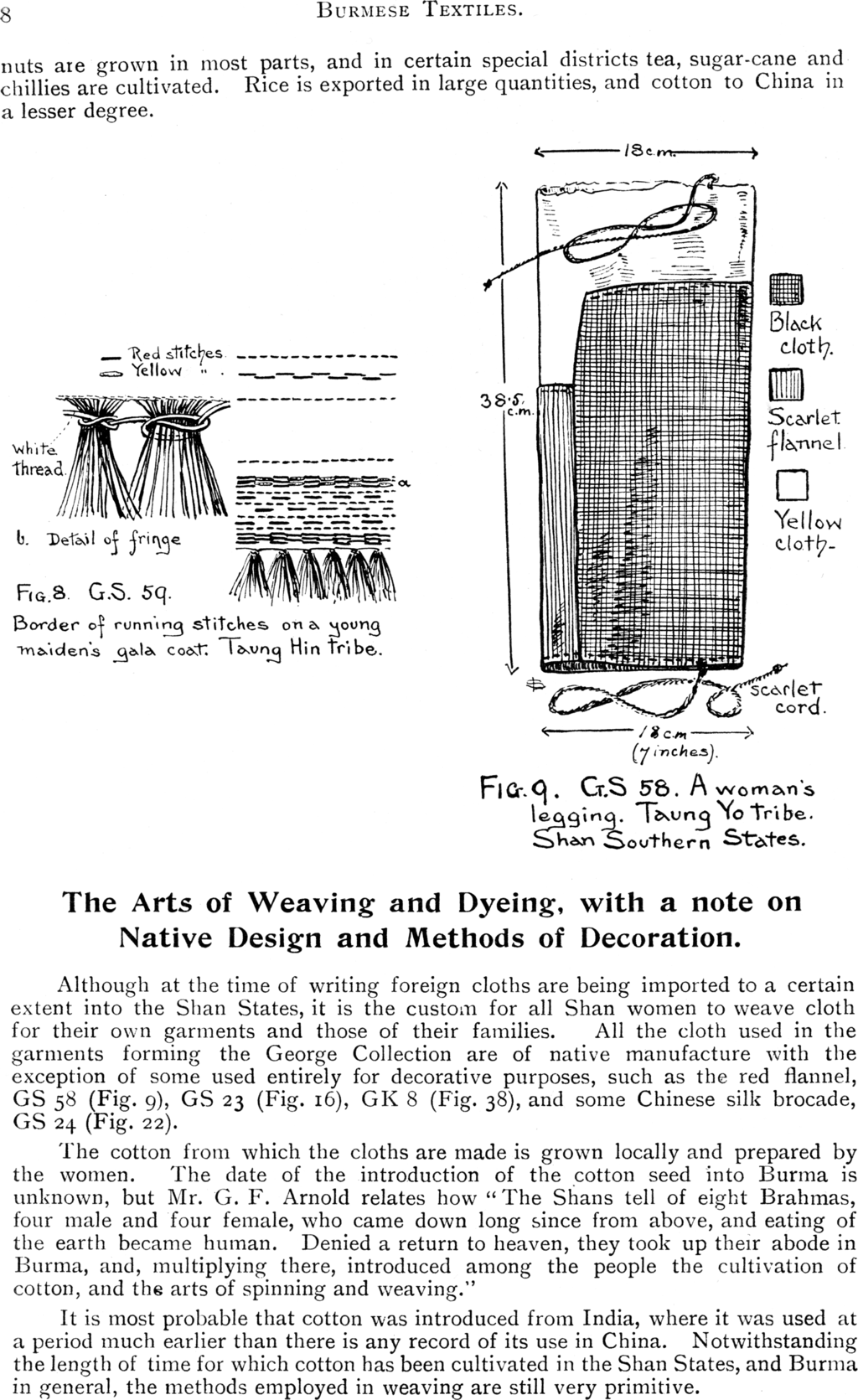nuts are grown in most parts, and in certain special districts tea, sugar-cane and chillies are cultivated. Rice is exported in large quantities, and cotton to China in a lesser degree.


The Arts of Weaving and Dyeing, with a note on Native Design and Methods of Decoration.
Although at the time of writing foreign cloths are being imported to a certain extent into the Shan States, it is the custom for all Shan women to weave cloth for their own garments and those of their families. All the cloth used in the garments forming the George Collection are of native manufacture with the exception of some used entirely for decorative purposes, such as the red flannel, GS 58 (Fig. 9), GS 23 (Fig. 16), GK 8 (Fig. 38), and some Chinese silk brocade, GS 24 (Fig. 22).
The cotton from which the cloths are made is grown locally and prepared by the women. The date of the introduction of the cotton seed into Burma is unknown, but Mr. G. F. Arnold relates how "The Shans tell of eight Brahmas, four male and four female, who came down long since from above, and eating of the earth became human. Denied a return to heaven, they took up their abode in Burma, and, multiplying there, introduced among the people the cultivation of cotton, and the arts of spinning and weaving."
It is most probable that cotton was introduced from India, where it was used at a period much earlier than there is any record of its use in China. Notwithstanding the length of time for which cotton has been cultivated in the Shan States, and Burma in general, the methods employed in weaving are still very primitive.
